Trekkor
Jun 10 2013, 04:55 PM
I have a VW Bug race car with a type four motor.
I would like it to safely rev up to 6500-7000 rpms.
What is needed to accomplish this?
thanks
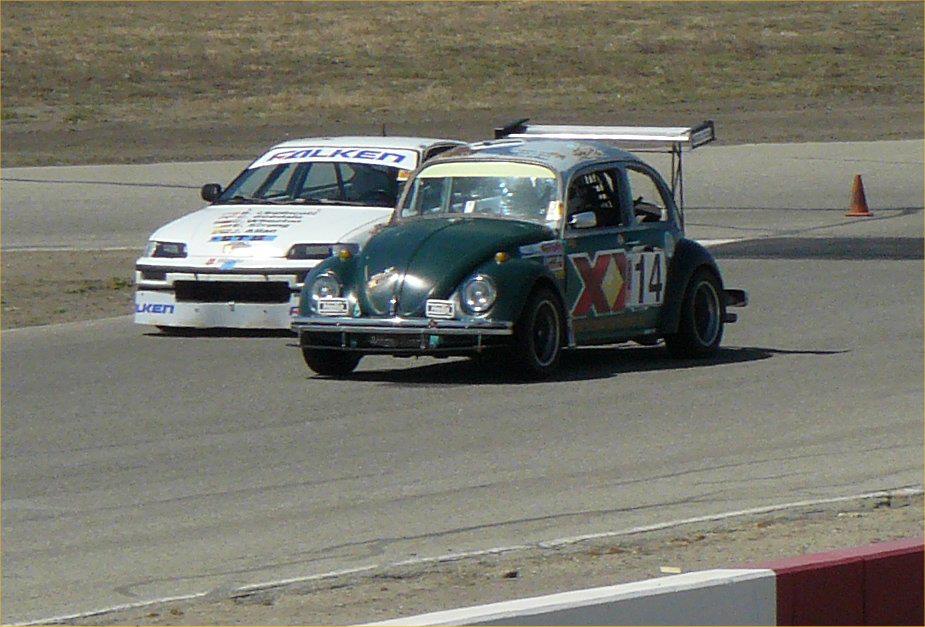
KT
ConeDodger
Jun 10 2013, 05:00 PM
Extreme balance. Light driveline components. Ignore the tach

timothy_nd28
Jun 10 2013, 05:02 PM
heavy duty valve springs and chrome moly pushrods
TheCabinetmaker
Jun 10 2013, 05:13 PM
My 2056 has the raby valve train kit with stock spring
It pulls to 6000 with no problem. The hd springs should get you 65
DBCooper
Jun 10 2013, 05:19 PM
All kinds of drag racers spinning them faster than that, so [EDIT] why not a T1? Be a little careful, those guys think ten seconds at a time and weekly engine teardowns are normal things. You want to do something a bit different with durability, more like the buggy guys. If just say your goal is RPM's not everyone giving you advice will understand that difference.
I really like John at Aircooled.net. He's a racer himself and sells parts but also gives really smart (not that common) and impartial advice about what you really need. Tell him I (Paul Illick) sent you and he might be a little more diplomatic.... but probably not. CB makes lightweight lifters, aluminum rockers, lightweight pushrods, rods and their CNC cylinder heads, whatever you need. It's all there and not expensive compared to teeners. Do you have any class restrictions on displacement or whatever?
EDIT: By the way, this is good suspension information:
http://www.aircooled.net/vw-handling-suspension-tuning/ The guy is a perennial hillclimb winner in Australia, for two decades now, in a bug. You certainly already have your own suspension setup, but it's always interesting to compare notes.
Bills914-4
Jun 10 2013, 05:26 PM
Some might say the right combo

, I would say to start , a good Balance job,
Dual springs , the right cam , & enough fuel & air , but hey what do I know I'm still
learning , Mine will rev to 6800-7000 rpm but stops making power around 6000rpm ,
cam is on the small side duration (we fixing that this summer/pauter cam)
I hope helps a little Bill D.
ConeDodger
Jun 10 2013, 05:27 PM
QUOTE(DBCooper @ Jun 10 2013, 03:19 PM)

All kinds of drag racers spinning them faster than that, but be a little careful, those guys think ten seconds at a time and weekly engine teardowns are normal things. You want to do something a bit different with durability, more like the buggy guys. If just say your goal is RPM's not everyone giving you advice will understand that difference.
I really like John at Aircooled.net. He's a racer himself and sells parts but also gives really smart (not that common) and impartial advice about what you really need. Tell him I (Paul Illick) sent you and he might be a little more diplomatic.... but probably not. CB makes lightweight lifters, aluminum rockers, lightweight pushrods, and their CNC cylinder heads, whatever you need. It's all there and not expensive compared to teeners.
It's a TypeIV so...

Steve
Jun 10 2013, 05:33 PM
Do they make a 3/4 cam for a type 4?
3/4 cam has around 280 duration which creates peak power around 6500 rpms.
That's what my dad ran in is bug with a 1641 motor with 40 DCNF webers
911 S for solex cam is similar.
DBCooper
Jun 10 2013, 06:05 PM
QUOTE(Steve @ Jun 10 2013, 04:33 PM)

Do they make a 3/4 cam for a type 4?
3/4 cam has around 280 duration which creates peak power around 6500 rpms.
That's what my dad ran in is bug with a 1641 motor with 40 DCNF webers
911 S for solex cam is similar.
Ha ha ha, your
dad? Oh no! You don't hear that 3/4 term any more. I did that same combination back in the day. Started out with a 1385 (1200 40hp with a "big bore" kit) and years later it had evolved into that same 1641/DCNF combination. I used a Crower 30-30, with good heads really made that engine come alive.
yeahmag
Jun 10 2013, 06:11 PM
A few key components:
* Aftermarket rods
* Careful balancing/blue printing
* Careful choice of cam/heads/exhaust
Build it as a system, not individual components. I take my stock rod, 2L head, 2056cc, WebCam 86a, dual spring motor to 6500 all the time. I worry about my rods though and imagine I'll dig in there soon to do something about it.
Trekkor
Jun 10 2013, 09:22 PM
This will be for endurance road racing.
I would like to be able to run the rpm's up higher between upshifts and run up 4th gear to redline if needed.
KT
mittelmotor
Jun 10 2013, 11:52 PM
That looks like the Buttonwillow ChumpCar race. You were running strong! I was one of three drivers in the EC-class BMW M3.
--Doug
messix
Jun 11 2013, 12:11 AM
endurance racing? don't go for high rpm! that mix is big spendy!!!!
go as big motor as you can and build for torque and use the gearing or tire diameter to get the speed.
to make it live long spinning fast you will need high flowing heads and high quality light weight valve train that is very spendy and the rotating assembly that can endure it too.
if your set on doing it... do it with a T1 grenade built like a fuse!
Mark Henry
Jun 11 2013, 06:25 AM
There are limitations to what a pushrod motor can do.
Try a shorter stroke, but valve float will be your main problem.
ChrisFoley
Jun 11 2013, 07:06 AM
My backup 1.8L race engine is set up for 6800 rpm redline.
It makes peak power right around 6400.
1832cc displacement; 41x34 stainless valves w- 8mm stems; fully ported; HD single valve springs; ceramic lifters; CrMo retainers; CrMo pushrods; JE domed pistons with valve pockets; 10.5:1 compr.; lightweight rods; Elgin 7606 camshaft (300 degree spec).
I estimate it puts out 150hp peak.
rick 918-S
Jun 11 2013, 07:32 AM
QUOTE(Mark Henry @ Jun 11 2013, 07:25 AM)

There are limitations to what a pushrod motor can do.
Try a shorter stroke, but valve float will be your main problem.

Use math. Shorter stroke with a balanced bore size. Calculate the connecting rod ratio to determine what the projected RPM range should be.
Lighten the rotating assembly to combat harmonic imbalance and the effects of inertia and increased effects of the weight as the parts start to fight the direction they are flying.
Light weight valves, duel springs and fat pushrods that don't flex.
That is the basics as I have learned and understand from my years in drag racing. That will get you to a high RPM engine. Making power in the upper range in a whole difference subject.
Bills914-4
Jun 11 2013, 08:29 AM
You should post this question over on the Type4 forum , ShopTalkForum
you can get some more useful information ?
http://www.shoptalkforums.com/viewforum.ph...efebd05b1e35fcf
Trekkor
Jun 11 2013, 02:20 PM
I think our current set-up made 124hp.
Can't remember for sure~
http://www.youtube.com/watch?v=lYTCR_u6amoKT
Trekkor
Jun 11 2013, 02:27 PM
QUOTE(mittelmotor @ Jun 10 2013, 10:52 PM)

That looks like the Buttonwillow ChumpCar race. You were running strong! I was one of three drivers in the EC-class BMW M3.
--Doug
Yes, I drove the first stint and after the second, I belive we were in 4th place overall.
A few laps into the third stint we lost our oil cooler and had to retire.
Too bad, as I was looking forward to another night time stint in that 24 hour race.
KT
Trekkor
Jun 11 2013, 10:13 PM
It's a pretty fun car!
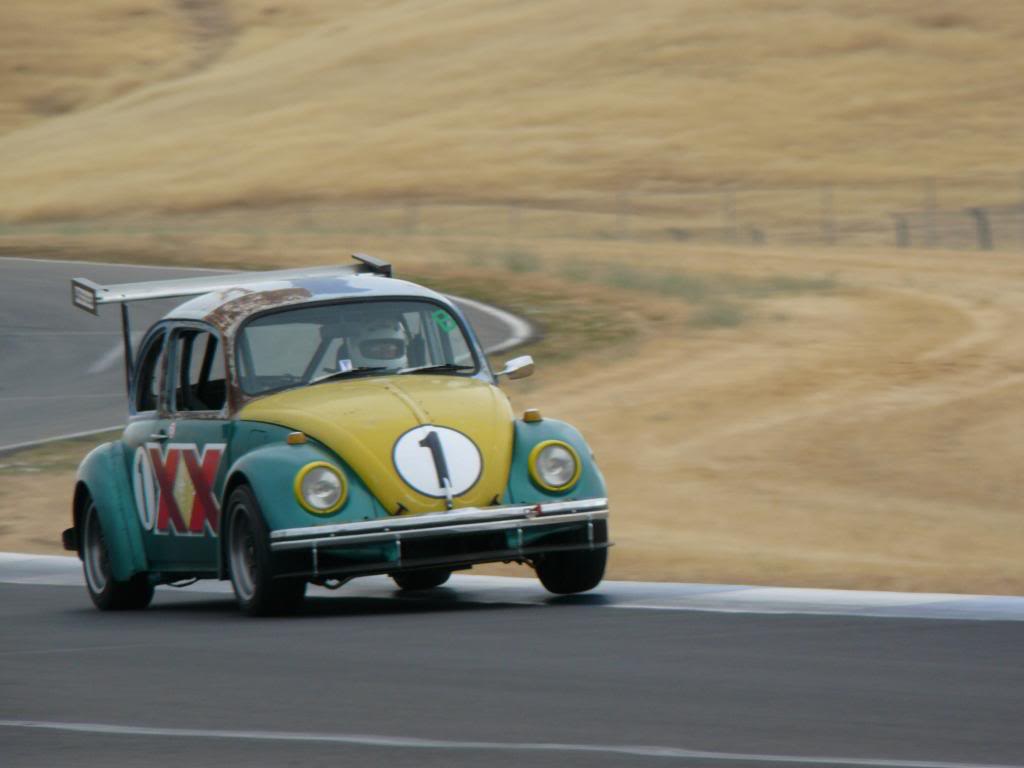
Looking to shift at 5500 most of the time, it's those long straights where I run out of oomph and need that extra push to keep up.
KT
stugray
Jun 11 2013, 10:24 PM
QUOTE
Calculate the connecting rod ratio to determine what the projected RPM range should be.
Is there a "rule of thumb" for con-rod ratio for these engines?
I see that the stock ratio for a 2.0L is about 1.84.
It seems simple enough to get to 1.96 by buying 5.5" (~140mm) connecting rods and spacing the cylinders up by ~9mm.
That would reduce low end torque while decreasing forces at high RPM.
What is the downside of a higher con-rod ratio?
Stu
messix
Jun 11 2013, 10:42 PM
weight...
the longer rod will weigh more.
the is a lot that goes into the science of designing an engine.
a short stroke engine
- has a slower piston speed compared to a longer stroke
- has a longer dwell at tdc [the piston doesn't move as the rod approaches and passes tdc]
-a short stroke will need a higher compression to get the best efficiency of the combustion
-the intake and heads has to flow very well while still maintaining high velocity [short intake pulses]
and there is much much more!
build a stroker that makes power all over. and stay around the stock red line.
Trekkor
Jun 11 2013, 11:04 PM
More fun:
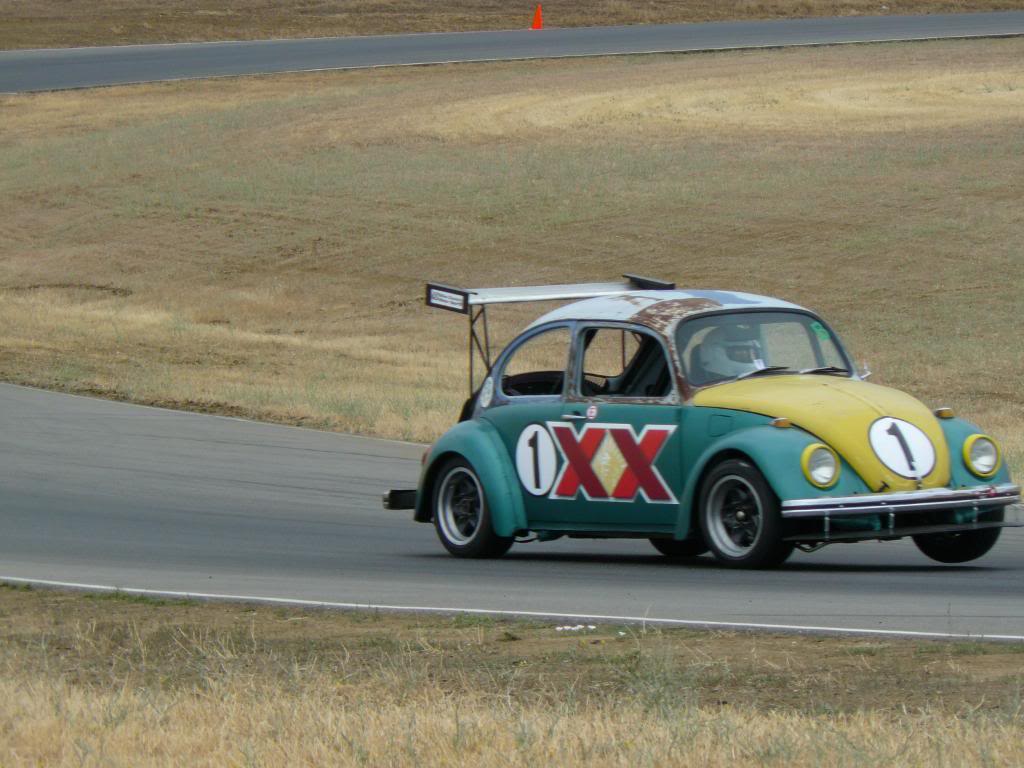
So, now if tach out the motor until the valves float, is that dangerous?
KT
Trekkor
Jun 11 2013, 11:41 PM
That's probably my biggest complaint with the stock TIV motor, the low rpm redline.
Today's modern 4 cylinder sportscars rev to 6500 or higher.
My '99 Ford Escort does.
Also, I'm looking for a '69 VW Bug gear chart that shows speeds in each gear at the full rpm range.
KT
Trekkor
Jun 11 2013, 11:42 PM
Dual Webers on the motor, BTW.
KT
messix
Jun 11 2013, 11:52 PM
"floating the valves is not good!!!!
the valves don't "float" they bounce off the seat because the springs cant control the weight of the valvetrain any more.
this can cause spring failure, valve failure, lifter failure, pistons to meet valves... bad things happen if you keep it up.
stugray
Jun 12 2013, 01:22 AM
QUOTE
they bounce off the seat because the springs cant control the weight of the valvetrain any more.
I thought that the problem occurred at the opposite end of the valve travel.
When the valve has enough momentum to "jump" off the top of the cam lobe and travel past full open.
This would cause the valve to travel farther than the cam is trying to open the valve.
The full open point is when the spring is trying to hold the valve back and the spring is at it's greatest force.
At the opposite end of valve travel (the one you are talking about) the valve is closing and the momentum of the valve is pushing against the rocker (and therefore the cam lobe).
Now IF the lifter has not come down to rest on the cam lobe from the overshoot at max open, then I could see that the valve train would be in "freefall" and the valve seat would stop the valve.
Do they really "float" so far for that to happen?
Stu - Maybe confused?
r_towle
Jun 12 2013, 09:37 AM
You might want to consider a 915 tranny, or a properly built transmission for the type of racing you are doing.
Gears are better than higher rpm in these motors.....push rods have limits just cause...
Rich
Mark Henry
Jun 12 2013, 10:11 AM
QUOTE(r_towle @ Jun 12 2013, 11:37 AM)

You might want to consider a 915 tranny, or a properly built transmission for the type of racing you are doing.
Gears are better than higher rpm in these motors.....push rods have limits just cause...
Rich
901 from a 911 is a better (easier) fit.
messix
Jun 12 2013, 01:27 PM
QUOTE(stugray @ Jun 12 2013, 12:22 AM)

QUOTE
they bounce off the seat because the springs cant control the weight of the valvetrain any more.
I thought that the problem occurred at the opposite end of the valve travel.
When the valve has enough momentum to "jump" off the top of the cam lobe and travel past full open.
This would cause the valve to travel farther than the cam is trying to open the valve.
The full open point is when the spring is trying to hold the valve back and the spring is at it's greatest force.
At the opposite end of valve travel (the one you are talking about) the valve is closing and the momentum of the valve is pushing against the rocker (and therefore the cam lobe).
Now IF the lifter has not come down to rest on the cam lobe from the overshoot at max open, then I could see that the valve train would be in "freefall" and the valve seat would stop the valve.
Do they really "float" so far for that to happen?
Stu - Maybe confused?
From the research I have done and what I have seen. It depends on the harmonic rate of the springs.
Yes the momentum of the valve train can and does somethimes by design continue to lift off the lobe. But the problem with the stock springs is age,low lift cams,poor cam design, and heavey valvetrain.
The stock heads don't even use spring dampers. So there fore I assumed the probable cuase of "valvefloat" on his engine to be poor harmonic response and inadequate valve control on a low lift cam.
Trekkor
Jun 12 2013, 08:38 PM
Yes, maybe a 901 tailshifter with a flipped ring and pinion is the answer.

KT
DBCooper
Jun 12 2013, 09:16 PM
Just a general question, what's the history of aircooled fours in endurance racing? Sixes, obviously, but fours? 356's, T1's, T4's? And, again demonstrating my ignorance, what's the track record for finishing? Reason I ask is curiosity about effective cooling over long periods, not something I'm familiar with.
brant
Jun 12 2013, 09:17 PM
QUOTE(Trekkor @ Jun 12 2013, 08:38 PM)

Yes, maybe a 901 tailshifter with a flipped ring and pinion is the answer.

KT
you don't have to flip it if you use a 911 model......
only the 914 version would need to be flipped.... a 911 car has the motor in back with the output to a transmission forward of it.... like a bug!
Trekkor
Jun 12 2013, 10:00 PM
QUOTE(DBCooper @ Jun 12 2013, 08:16 PM)

Just a general question, what's the history of aircooled fours in endurance racing? Sixes, obviously, but fours? 356's, T1's, T4's? And, again demonstrating my ignorance, what's the track record for finishing? Reason I ask is curiosity about effective cooling over long periods, not something I'm familiar with.
I don't know, but we turned 322, 3 mile laps in our 2012 24 hour race.
We only lasted 4 hours in our last.
Most air cooled fours do not do well at all.
KT
Trekkor
Jun 12 2013, 10:01 PM
QUOTE(brant @ Jun 12 2013, 08:17 PM)

you don't have to flip it if you use a 911 model......
only the 914 version would need to be flipped.... a 911 car has the motor in back with the output to a transmission forward of it.... like a bug!
911 901's are not easy to come by.
914 tailshifters are being given away.
KT
messix
Jun 12 2013, 10:11 PM
QUOTE(DBCooper @ Jun 12 2013, 08:16 PM)

Just a general question, what's the history of aircooled fours in endurance racing? Sixes, obviously, but fours? 356's, T1's, T4's? And, again demonstrating my ignorance, what's the track record for finishing? Reason I ask is curiosity about effective cooling over long periods, not something I'm familiar with.
they still seem to do well in the Baja races....
aircooledtechguy
Jun 12 2013, 11:13 PM
If I build a motor to rev higher these are some of the things I look at changing:
1. balance the rotating mass
2. H-beam rods. If using stock rods(!?), upgrade to ARP rod bolts (required).
3. stronger valve springs
4. Light weight lifters
5. lighter weight rockers and push rods.
6. Lightweight valves.
messix
Jun 12 2013, 11:45 PM
and would you run it for 24hrs in race trim? only if you spent big$$$ on very high quality stuff!
DBCooper
Jun 13 2013, 10:29 AM
You said "we turned 322 3 mile laps in our 2012 24 hour race", which is an average of about 40 miles an hour. That's not real fast, so did you spend time in the pits? How much? A 40 mph average speed won't stress your engine, so I guess the real question is what's your real average speed, when racing, the speed you'd need to maintain for 24 hours?
Reason for the T1 suggestion was cost. All the performance parts you need are cheap in a T1, while the same T4 parts are expensive. The question about aircooled fours in endurance racing was because you're doing something really rare and difficult, so it's really cool. But it's so cool exactly because it's so hard. And since it's hard to make a T4 live that long it seems that your priority is probably longevity before power or RPM's. Or no? And IF that's the case (lots of "ifs" here) then that suggestion to go big and mild might be wiser than smaller and stressed.
Did you chop up the back of the car, or was it converted to upright cooling? If so what are you using? Is there a thread somewhere?
worn
Jun 13 2013, 10:45 AM
QUOTE(DBCooper @ Jun 13 2013, 08:29 AM)

Reason for the T1 suggestion was cost. All the performance parts you need are cheap in a T1, while the same T4 parts are expensive. The question about aircooled fours in endurance racing was because you're doing something really rare and difficult, so it's really cool. But it's so cool exactly because it's so hard. And since it's hard to make a T4 live that long it seems that your priority is probably longevity before power or RPM's.

My short experience, with a ton of explorative reading, has led me to the conclusion that the 914 was designed for a six and given a 4. And that 4 was pushed to and then past its design limitations. To make power you end up heating the heads which had already been increased in size progressively. By the time they got to the 2.0, which was born of necessity and I am glad that they did, they had reached a point at which they had to move the red line on the temp gauge and sell a car where the oil pressure light came on at about 3 psi, with no stock gauge! They also sold them in general to the same kinds of people who buy Porsches now. If there were problems they would pay the dealer.
Not a rant about the 914, because it is a thoroughbred chassis. I just think that if you want the power that the chassis deserves you are going to have heat or you are going to have a six (and heat). I drove my 914-4 to work today and loved every meter travelled.
What I think I am saying is that for power, I am not sure that the type 4 engine is the best example out there. Maybe if you have to have air-cooled, but even then I suspect there is more capacity in the Type 1. What is the icon for having said the wrong thing?
yeahmag
Jun 13 2013, 10:54 AM
I would completely disagree from experience. My Type I's never could take the same beating on the track that my Type IV's have. I build all my own engines and while I've progressed in my engine building skills over the years I still believe the Type IV has more capacity for cooling and stress than the Type I. What engine went in the later busses...? A Type IV.
DBCooper
Jun 13 2013, 12:43 PM
Well, the T4 IS a truck motor, so it makes sense they'd put it in the vans.
There are only two significant advantages the T1 design has over the T4 for performance, first being the exhaust port design, but the big second is the huge availability of not expensive performance parts. For example you can buy all new aftermarket aluminum cases that are beefed up in all the areas where the OEM case proved to be weak, forged cranks in every dimension, h-beam rods, brand new CNC milled heads in any port shape you want, etc, etc. That means these days you can build an ENTIRELY NEW T1 engine with all performance parts.
I think you could probably build one to last, but that's not actually what I'm suggesting. I really just want to be clear about the actual needs, to make sure that the suggestions I make, that ALL of us make, are actually in line with the intentions and needs. If all you need to do is average 40 dependable miles an hour for 24 hours, for example, we may be overthinking and overspending all this. And the same's true to bump that up to just 60 mph, T4 or T1. So I'm just saying understand the really basic questions about need first, then the fun stuff (like spending Trek's money for him) later.
ChrisFoley
Jun 13 2013, 01:23 PM
I averaged over 60 mph for 1000 miles the last time I went on a long road trip in my 914.
That should be a piece of cake on the track.
Trekkor
Jun 13 2013, 01:23 PM
QUOTE(DBCooper @ Jun 13 2013, 09:29 AM)

You said "we turned 322 3 mile laps in our 2012 24 hour race", which is an average of about 40 miles an hour. That's not real fast, so did you spend time in the pits? How much? A 40 mph average speed won't stress your engine, so I guess the real question is what's your real average speed, when racing, the speed you'd need to maintain for 24 hours?
Reason for the T1 suggestion was cost. All the performance parts you need are cheap in a T1, while the same T4 parts are expensive. The question about aircooled fours in endurance racing was because you're doing something really rare and difficult, so it's really cool. But it's so cool exactly because it's so hard. And since it's hard to make a T4 live that long it seems that your priority is probably longevity before power or RPM's. Or no? And IF that's the case (lots of "ifs" here) then that suggestion to go big and mild might be wiser than smaller and stressed.
Did you chop up the back of the car, or was it converted to upright cooling? If so what are you using? Is there a thread somewhere?
We spent at least 60 minutes in the pits doing fueling/driver changes and maybe as much as two hours for mechanical issues. Also, some lengthy full course yellows.
We had to keep the rpms' below 4500 the entire race or the valve covers gaskets would blow off ( drivers weren't paying attention and this happened four or more times during the race anyway ).
We had hard contact and had to change both driver side wheels that were broken.
I went out at 4:00 am and noticed the steering wheel was about to come off. had to limp back and get that tightened.
We fabbed up very ugly, yet very effective cooling ducts.
In 110 degree plus conditions the car never went over 190 degrees.
KT
DBCooper
Jun 13 2013, 03:04 PM
QUOTE(worn @ Jun 13 2013, 09:45 AM)

What I think I am saying is that for power, I am not sure that the type 4 engine is the best example out there. Maybe if you have to have air-cooled, but even then I suspect there is more capacity in the Type 1. What is the icon for having said the wrong thing?
Yeah, probably not good to say. Trekkor's already invested in the T4, it's a solid engine, and if he never saw more than 190 degrees he's already figured out what I thought would be the biggest hurdle. Not that it helps any in this discussion (it doesn't) , but I like this photo of Funcars at Donnington Park:
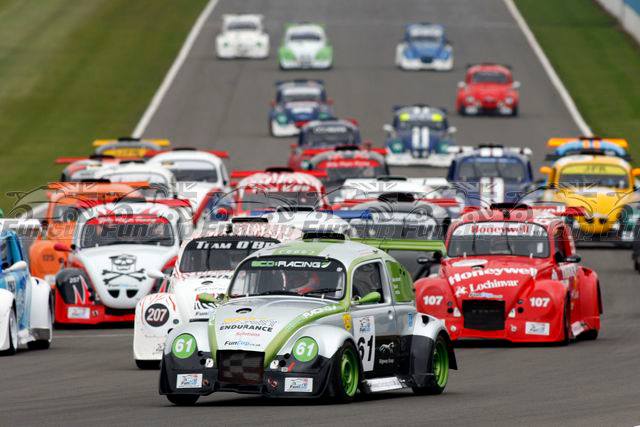
So what were average speeds when you were on the track? Were you competitive with the class winner, or do you need to go faster? Don't answer that, EVERYONE needs to go faster, so a lot or a little?
For the valve cover gaskets you can weld a 1/4" strip of sheetmetal on the inside of the valve cover to form a channel so the gasket can't slip in. That together with a lot more crankcase ventilation and they should stay in place. Can't fix shunts, you'll tighten that nut, so put in a good sound system and go have some fun. 190 degrees? I'd LOVE to see your ugly vents.
Everybody's given good suggestions about lightening the valve train so you can rev higher. You've got a late model car, so what's the final drive now, do you know? 3.88? If not that's a possibility, and cheap. A built late model fine geared single sideplate trans (superbeetle) should be all you'd need. Their 4th is geared a little higher already (and they also sell aftermarket fourth gears) and you can increase the RP even more to a 3:44. That might be preferable to a lot of (expensive) engine modification, unless you already intend to do that anyway. For the final word give Fat Performance a call. They still build T4's for desert racing and sell the parts, so they should give you as good information as you'll get anywhere.
Trekkor
Jun 13 2013, 05:12 PM
We missed our class win by two laps.
We were doing 70-100 on the fast sections.
Just limited to low rpm's in the first race.
We modified the valve covers and added better crankcase venting so we are getting there.
This last race, we were in 4th overall after 4 hours before we retired due to the split on engine oil cooler.
Here's a couple shots of the cooling ducts.
All parts were found at, surprise, Home Depot!
Click to view attachmentClick to view attachmentThe air was directed from both sides and into a tee, that pointed right into the impeller on the motor.
KT
stugray
Jun 13 2013, 05:28 PM
QUOTE
I averaged over 60 mph for 1000 miles the last time I went on a long road trip in my 914.
I drove my 914 back & forth from Oklahoma City to L.A. at least 5 times while in college.
70-90 mph from full tank to empty was the norm. 24 hours with 12 hours straight drives ( I had to sleep). However a 914 with just a driver is quite comfortable to sleep in at rest stops ;-). I would show up in LA sunburnt on just one side of my face.
Stu
messix
Jun 13 2013, 05:53 PM
wow really guys

... you cant compare cruising down the hwy for hours on end as anything like RACING for hours on end!!!!
the stress that full throttle acceleration and full loading of the engine for hours on end is more like driving up a steep hill for hours on end!!!
DBCooper
Jun 14 2013, 08:10 AM
That is SO cool. Well done. I don't know what else to say. Well, maybe "git er done!" That's outstanding. My son had that same bumper sticker on his slammed 72 144 in Santa Cruz. It caused a lot of confused looks.
It looks like you have things under control. Raising the final ratio in a T1 trans is easy enough. They were the original base for the Mendeola boxes so they're really pretty solid, and both Mendeola and Weddle have parts if you want to beef it up. The taller ring and pinion is something like $350. If you haven't had problems with the T1 transmission so far that might be easiest, but the 911 901 conversion has been done a lot so no mystery. I have no idea about flipping ring gears in a 914 901, but can't imagine that transmission is much different internally than the 911.
I also think you already know how to spin the T4 a little faster, but to me it sounds like you're actually there already, that your concern is more the endurance racing issues than more RPM's or horsepower. Give Fat a call, I think they can help, or point you at someone else who can. Even Weddle or Mendeola, that's what their customers do. Unless someone here has lots of T4 endurance racing experience and will chime in.
Good one, Trekkor. Looks like a lot of fun. Just to throw one more idea on the table I think you know Jeff already, with the LS1 244:
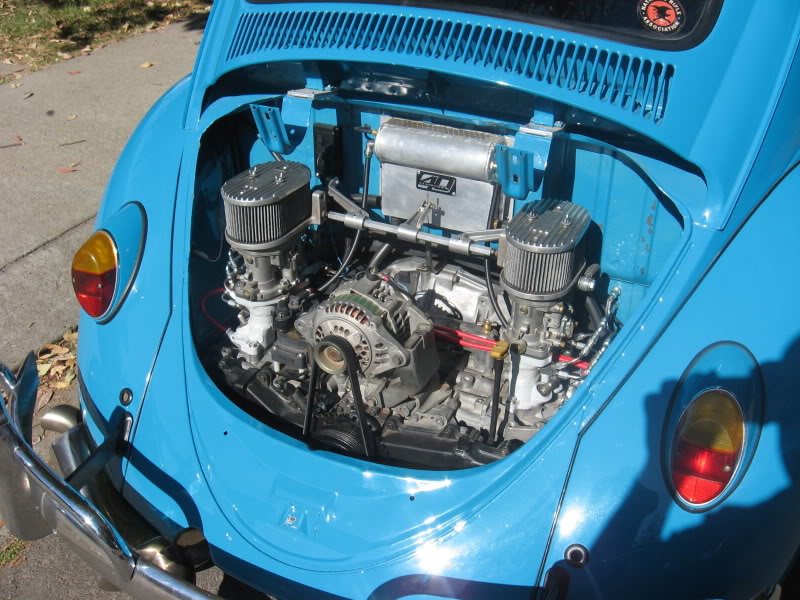
sean_v8_914
Jun 14 2013, 11:24 AM
you must manage the FORCE
force = mass x acceleration
component weight x how fast you move it, RPM.
marinate on that . then imagine every moving part in your valve train.
22mm wrist pins shave over 150gm
nice set of rods shave over 150gm
light weight valve train will cost ya.
Obi wan will love you and yoda will make you live forever
This is a "lo-fi" version of our main content. To view the full version with more information, formatting and images, please
click here.







